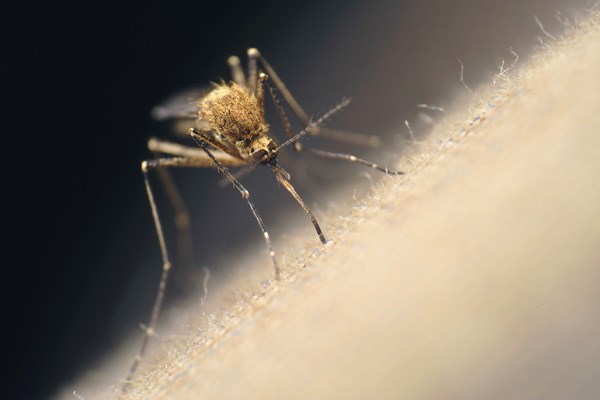West Nile virus (WNV) season has arrived, and residents and visitors in Prairie North Health Region (PNHR) are reminded to take precautions and protect themselves against mosquito bites.
PNHR Medical Health Officer Dr. Mandiangu Nsungu reminds the public that mid-July through August is the peak season for Culex tarsalis activity, the mosquito that transmits West Nile virus to humans.
“While this summer’s predominantly hot dry weather has resulted in fewer mosquitos overall than in previous years, the wet weather of the past week coupled with warm to hot temperatures forecast for the next while are perfect for the appearance of greater mosquito numbers,” Nsungu explained.
Most of the mosquitoes already identified through the province’s WNV surveillance system are predominantly Culex tarsalis. Mosquitoes are trapped, counted and tested for WNV in locations across Saskatchewan beginning in June. Culex tarsalis mosquito numbers have increased significantly in the southern part of Saskatchewan, and have been detected in all ecological risk areas with the exception of the far north.
“We expect to see the risk of WNV transmission rise as an increasing number of these mosquitoes become infected with WNV,” said Nsungu.
During hot dry weather, Culex tarsalis mosquitoes are most active around dusk and throughout the night. Precautions should always be used, particularly at dusk, through the night, and to dawn to prevent mosquito bites, advises Nsungu.
You can protect yourself from mosquito bites by using insect repellent containing DEET, by wearing long sleeved shirts and pants when you are outside, and by staying indoors at dusk and dawn when mosquitoes are most active.
In addition to these personal precautions, people are urged to reduce the numbers of mosquitoes around their homes by:
• regularly cleaning and emptying containers that can collect water, such as bird baths and eaves troughs;
• clearing yards of old tires and other items that can collect water;
• ensuring rain barrels are covered with mosquito screening or are tightly sealed around the downspout;
• keeping screens on windows and doors in good repair; and
• keeping bushes, shrubs and lawns clear of overgrowth and debris.
Nsungu reminds the public that 80 per cent of people who become infected with West Nile virus will have no symptoms. About 19 per cent of people will have an illness during which they will experience fever and headache, feel tired and achy, and may have a rash. Less than one per cent of people infected with WNV will suffer a more severe illness in which the infection causes swelling and inflammation of the brain, leading to symptoms such as severe headaches, confusion, disorientation, coma and paralysis.
For more information and updates on West Nile virus, including updated surveillance results, risk maps and weekly “West Nile and Culex Reports”, visit http://www.saskatchewan.ca/live/health-and-healthy-living/health-topics-awareness-and-prevention/seasonal-health-concerns/west-nile-virus.
Additional information on protective measures and West Nile Virus symptoms, when to seek help, etc. are available at Healthline Online at http://www.saskatchewan.ca/live/health-and-healthy-living/manage-your-health-needs/healthline.




